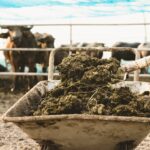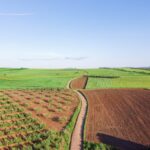For small-scale farmers across South Africa, the challenges of soil degradation, climate change, and declining yields can feel overwhelming. But there’s a powerful, nature-based solution that’s quietly transforming struggling farms into productive, resilient ecosystems: agroforestry.
Agroforestry is the practice of integrating trees and shrubs into crops and livestock systems. It might sound old-fashioned, but it’s a time-tested approach that modern science has proven to boost farm health and profitability. In regions like Limpopo, Eastern Cape, and KwaZulu-Natal, more smallholder farmers are embracing agroforestry not just as a technique, but as a lifeline.
One of the biggest benefits of agroforestry is its ability to improve soil fertility. Trees like acacia, moringa, and pigeon pea fix nitrogen into the soil, acting as natural fertilizers that reduce the need for expensive synthetic inputs. Their deep roots also break up compacted soils and draw up nutrients from below the surface, enriching topsoil and promoting better crop yields over time.
Water conservation is another game-changing advantage. Trees provide shade that lowers ground temperatures and reduces evaporation, which helps retain moisture in the soil. This is crucial in drought-prone areas where every drop counts. Their root systems also help reduce erosion and improve water infiltration, allowing rain to sink into the ground instead of washing away.
For small farms trying to diversify their income, agroforestry opens up exciting possibilities. Fruit and nut trees can provide additional revenue streams with minimal maintenance. Medicinal plants like aloe or African wormwood can be harvested for local markets or value-added products. Even timber and fuelwood can be sold sustainably when managed properly, adding long-term value to the land.
Another key benefit is increased resilience to climate change. When a farm is designed with multiple species and canopy layers, it becomes less vulnerable to pests, diseases, and extreme weather. A diversified farm buffers risk—if one crop fails, others may still thrive.
Agroforestry also supports biodiversity, which plays a vital role in natural pest control and pollination. Birds, bees, and beneficial insects are more likely to thrive in a farm that mimics a natural ecosystem. This leads to stronger harvests without relying heavily on chemical pesticides.
Importantly, agroforestry is not a one-size-fits-all model. It can be adapted to suit different climates, land sizes, and goals. Whether you’re growing maize, raising goats, or cultivating vegetables, there’s a form of agroforestry that can fit into your system. Intercropping with nitrogen-fixing trees, using live fences, or planting windbreaks are just a few practical ways to get started.
While it does require some upfront planning and patience, the long-term rewards of agroforestry are well worth it. Government programs, NGOs, and agricultural extension services in South Africa are increasingly offering support and training to farmers looking to transition. By starting small and learning from others, farmers can build a system that works for their land, their budget, and their future.
In a time when small farms are under growing pressure, agroforestry offers more than just survival—it offers renewal. With its blend of tradition and innovation, this age-old practice could be the key to a more sustainable, productive, and profitable farm life in South Africa.
Join 'Farmers Mag' WhatsApp Channel
Get the latest Farming news and tips delivered straight to your WhatsApp
CLICK HERE TO JOIN






